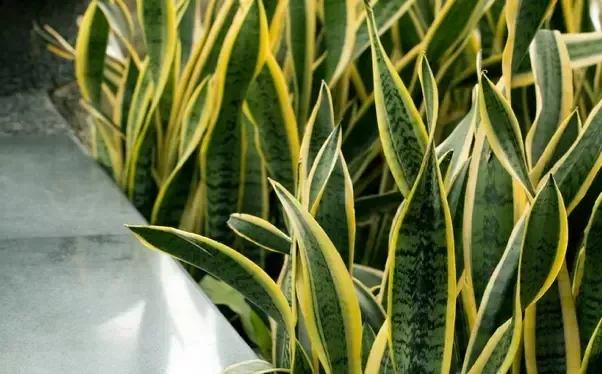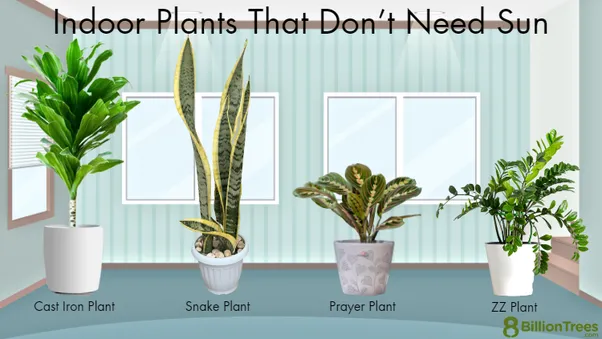Plants That Thrive Without Sunlight
If you love plants but don’t have ample natural light in your home, don’t despair. There are many beautiful houseplants that can survive—and even flourish—without direct sunlight. Below you’ll find a list of top low-light plants along with care tips to help them vines without sun.
Snake Plants (Sansevieria trifasciata)
Snake plants, also known as mother-in-law’s tongue, are extremely hardy and tolerant of low light. Their staggered leaves with bold vertical stripes make them an attractive accent plant for any room. From my experience, snake plants can go weeks without water and still perk right back up when watered. They’re practically impossible to kill! In fact, overwatering is more dangerous for snake plants than lack of light.
Place your snake plant in an east-, west-, or north-facing window where it will receive minimal sunlight, or situate it farther from a south-facing window. Water only when the top few inches of soil are dry. Snake plants grow slowly, so be patient—their toughness makes them a safe choice even for forgetful plant parents!
Pothos (Epipremnum aureum)
- Golden pothos
- Marble queen pothos
- Pearls and jade pothos
With their heart-shaped variegated leaves, pothos plants are absolutely gorgeous whether hanging from a wall shelf or trailing from a hanging basket. Pothos thrive in low to medium light and are extremely tolerant of neglect. I once forgot to water my marble queen pothos for over a month—when I finally watered it, new leaves emerged within weeks!
Pothos do best in bright, indirect light away from direct sun. Water when the top inch of soil is dry. They’re fabulous air-purifying plants and will trail gracefully wherever they’re placed. Pothos make wonderful starters for beginning plant parents. Their resilience has earned them the nickname “the forever plant.”
Chinese Evergreens (Aglaonema)
With their colorful patterned leaves in shades of red, pink, and green, Chinese evergreens are true eye-catchers. They come in compact forms suited for tabletops as well as mound-shaped varieties for floor placement. Chinese evergreens tolerate very low light and do well in rooms with artificial light. I keep mine about 6 feet from a southwest window, which provides minimal, but sufficient sun.

Water only when the topsoil becomes dry. Overwatering can cause root rot, so allow the soil to dry out between waterings. Chinese evergreens grow slowly and can live for many years with the right conditions. Their lovely leaves make them a nice choice for any room where natural light is scarce.
ZZ Plant (Zamioculcas zamiifolia)
With their broad, shiny green leaves resembling succulents, ZZ plants are low-maintenance beauties that could not care less about light levels. They can get by in very dim conditions and are known to be near-impossible to kill! The ZZ plant has earned legendary status in the houseplant world for requiring almost no care.
In my experience, ZZ plants thrive on neglect. Water them just a few times per year—approximately once every six months—and you’ll be rewarded with steady growth. Place them anywhere in your home, even under furniture where they receive no direct sun. ZZ plants are super low-effort plants you virtually cannot go wrong with.
Spider Plant (Chlorophytum comosum)
Spider plants are admirable for their high tolerance of low and artificial light. While they thrive in bright light, they’ll tolerate medium to low light with ease. Their trailing grass-like leaves and aerial tubular blossoms add grace and appeal. From my experience however, spider plants seem to demand weekly watering to keep their colors vibrant and leaves perky.
Place spider plants in an east- or west-facing window or more than five feet from a south-facing window. Water weekly and remove flower stalks after blooming to encourage leaf growth. Spider plants are champions of air purification and may even generate plantlets called “spiderettes” along their leaf margins—a fun surprise!
While they need a bit more care than ZZ plants, spider plants remain incredibly hardy and forgiving as a great starter plant. Even if you forget to water them for a few weeks, their leaves won’t completely wilt. You’ll usually be able to revive them with water and a little extra sun.

Peperomia (Peperomia spp.)
Peperomias come in a stunning variety of leaf shapes and colors like green, red, pink, and more. Some common varieties are Peperomia obtusifolia, PeperomiaHope, and radiator plant. Peperomias tolerate low to medium light levels and thrive on neglect like ZZ plants. I find that peperomias appreciate infrequent watering, about once every two weeks.
Their compact size and decorative leaves make peperomias charming tabletop plants as well as beautiful floor plants. Place peperomias anywhere from low-light areas to a few feet from a sunny window. They grow slowly but will reward you with their unusual good looks for years with very minimal care.
English Ivy (Hedera helix)
With its trailing vines and dark green heart-shaped leaves, English ivy is spectacular for draping over bookcases or training up a moss pole. It excels in low light and thrives on neglect. You could virtually forget to water English ivy for months and it would probably survive! However, it grows more lushly when watered approximately once every two weeks.
English ivy prefers medium to low indirect light. It’s extremely hardy and will even tolerate short periods of very low humidity. English Ivy makes an excellent choice for areas where direct sunlight cannot reach, like under furniture or around dark corners. Its vining habit allows creative uses throughout your home.
To summarize, the top plants suited to thrive without direct sunlight include Snake plants, Pothos, Chinese evergreens, ZZ plants, Spider plants, Peperomia and English ivy. With the right care as outlined above, all of these beauties will flourish even in rooms with minimal natural light. While sunlight is ideal, these wonderful low-light plants prove you don’t need a sunny spot to enjoy lush indoor greenery. With a bit of TLC, their dramatic foliage will light up any corner of your home.
Plants That Can Grow Without Direct Sunlight
| Plant | Light Requirement | Care Tips |
|---|---|---|
| Pothos | Low light to medium light | Water when top inch of soil is dry. Propagate cuttings in water. |
| ZZ plant | Low light | Water infrequently. Tolerates neglect well. |
| Snake plant | Low light | Water every few weeks. Very drought tolerant. |
| Peace lily | Low light to medium light | Water when soil is dry. Leaves droop when thirsty then perk back up. |
| Chinese evergreen | Low light | Water when top inch of soil is dry. Prune periodically to encourage bushiness. |
FAQ
-
What plant basically does not need any sunlight?
Most ferns live in shaded areas beneath trees and can survive with very little sunlight. They pretty much don’t need direct sun beams to live.

-
Are there any other plants that kinda don’t mind the dark?
Some mushrooms and fungi are perfectly happy growing in places with hardly any light, like inside caves. Go figure! Moss also does alright in lowlight spots.
-
Why do ferns do so well without much sun?
Ferns have evolved to grow using a process called photosynthesis that doesn’t need super bright light conditions. Their leaves are small and sort of “grouped” in a way that maximizes what limited light they get. Impressive really!
-
Is it possible for plants to live without any sunlight at all?
Most botanists say no plant can survive totally without light. However, there are reports of some algae and fungi growing many feet underground with zero sun exposure. Who knows, perhaps one day we’ll discover underground plants! For now it’s unclear.
-
Could houseplants live without light?
While houseplants like peace lilies and spider plants can tolerate lowlight pretty well, ultimately they all require at least some sunlight to live. Putting plants in a windowless basement basically means a disappointing fade out. Light is just too important for photosynthesis.
-
What’s the longest a plant has gone without light?
In some laboratory experiments, small moss plants have survived in total darkness for over a month! However, long term that’s not sustainable. Most botanists think no plant could endure more than a year or two without any light exposure. They’d stop being able to make their own food through photosynthesis.
-
Do all plants rely on the color green for absorbing light?
Surprisingly no – some flowering plants have red or purple leaves that do photosynthesis. And believe it or not, there are green algae way down in oceans that use cyanobacteria to harness sunlight without being green at all! Nature never ceases to amaze, huh?

